The Uniform Distribution (Rectangular Distribution), Cumulative Uniform Distribution (CDF), and The Probability Density Function
Random Variables - Continuous
A Random Variable is a set of possible values from a random experiment.
Continuous
Random Variables can be either Discrete or Continuous:
- Discrete Data can only take certain values (such as 1,2,3,4,5)
- Continuous Data can take any value within a range (such as a person's height)
In our Introduction to Random Variables (please read that first!) we look at many examples of Discrete Random Variables.
But here we look at the more advanced topic of Continuous Random Variables.
The Uniform Distribution
The Uniform Distribution (also called the Rectangular Distribution) is the simplest distribution.
It has equal probability for all values of the Random variable between a and b:

The probability of any value between a and b is p
We also know that p = 1/(b-a), because the total of all probabilities must be 1, so
the area of the rectangle = 1
p × (b−a) = 1
p = 1/(b−a)
We can write:
P(X = x) = 1/(b−a) for a ≤ x ≤ b
P(X = x) = 0 otherwise
P(X = x) = 0 otherwise
Cumulative Uniform Distribution
We can have the Uniform Distribution as a cumulative (adding up as it goes along) distribution:
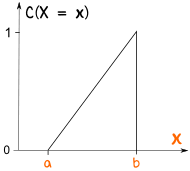
The probability starts at 0 and builds up to 1
This type of thing is called a "Cumulative distribution function", often shortened to "CDF"
Other Distributions
| Knowing how to use the Uniform Distribution helps when dealing with more complicated distributions like this one: | 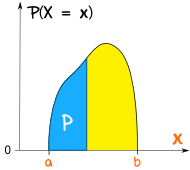 |
The general name for any of these is probability density function or "pdf"
The Normal Distribution
The most important continuous distribution is the Standard Normal Distribution
It is so important the Random Variable has its own special letter Z.
The graph for Z is a symmetrical bell-shaped curve:
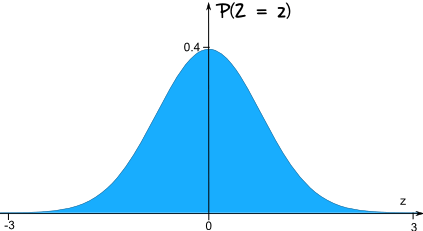
Usually we want to find the probability of Z being between certain values.
Summary
- A Random Variable is a variable whose possible values are numerical outcomes of a random experiment.
- Random Variables can be discrete or continuous.
- An important example of a continuous Random variable is the Standard Normal variable, Z.



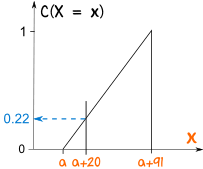
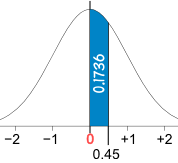
Comments
Post a Comment